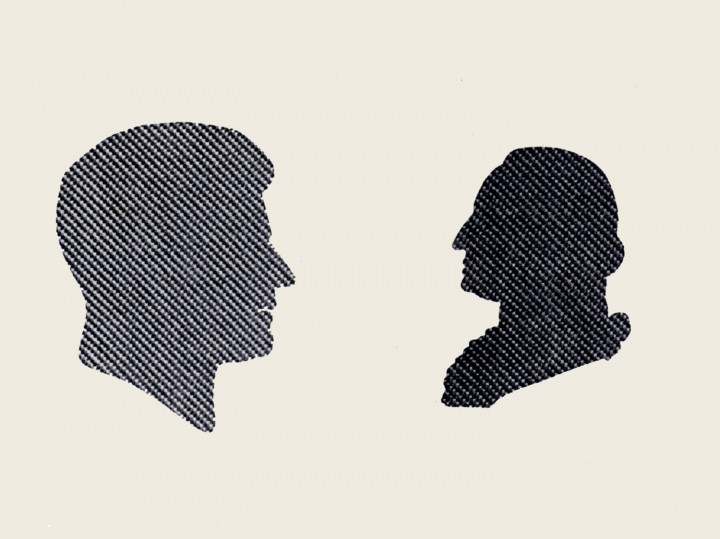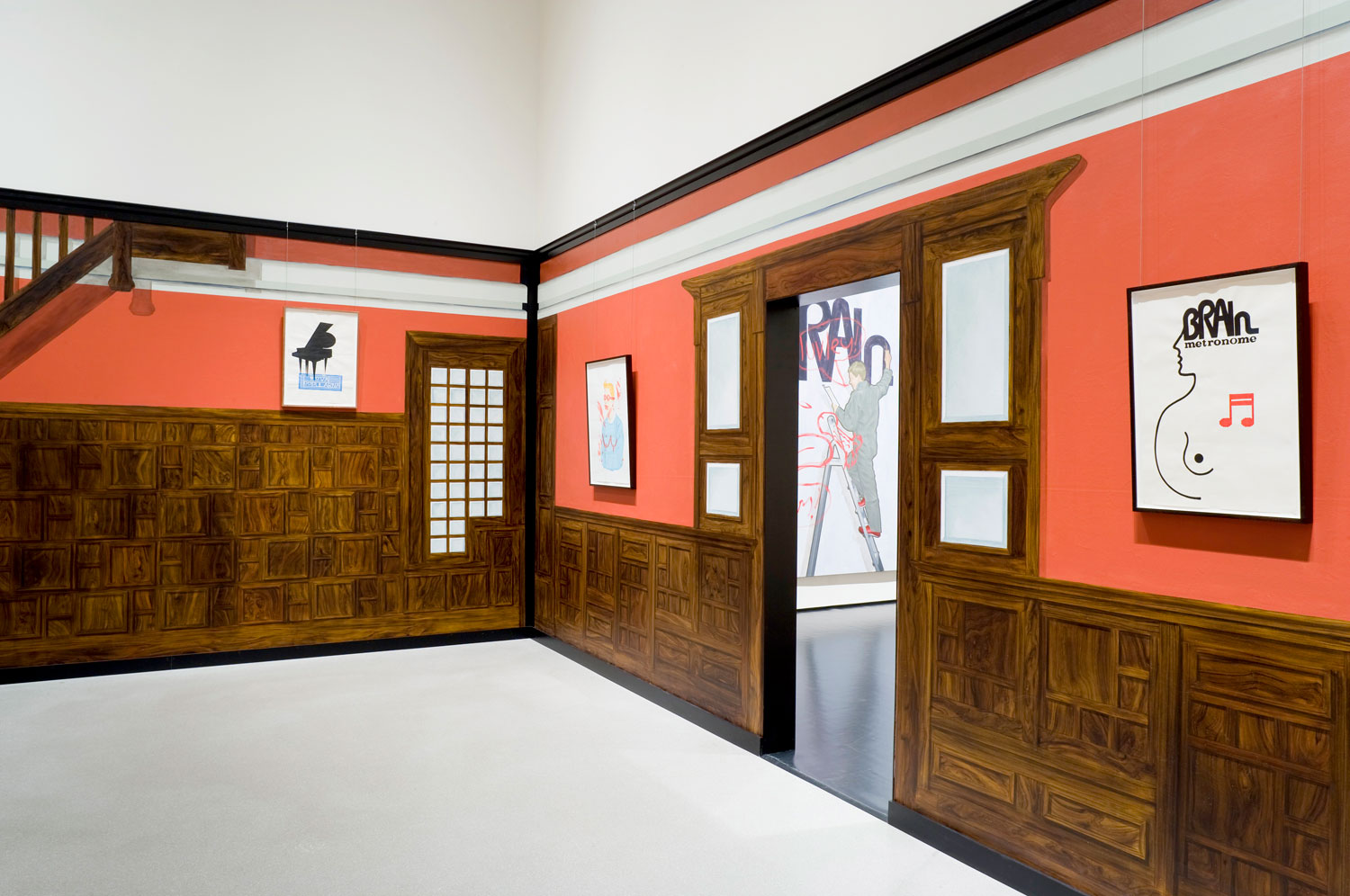“Pictures,” the title of Douglas Crimp’s seminal 1977 group exhibition at Artists Space in New York, is outwardly unremarkable, even flatfooted, yet roiling with treacherous historical undercurrents. To begin with, it would have been significant at the time to point out that the featured artists — Troy Brauntuch, Jack Goldstein, Sherrie Levine, Robert Longo and Philip Smith — were all working with recognizable imagery. Certainly, one could argue that even in the period dominated by abstraction, a period when, moreover, American art and abstract art were directly equated, certain forms of figuration persisted, but these had been consistently dismissed by critics as marginal and/or retrograde. And even when, in his 1962 essay “After Abstract Expressionism,” Greenberg introduced the term “homeless representation” to describe the vague imagistic currents he had begun to discern in the paintings of de Kooning and Guston, for instance, it involved a great deal of equivocation.1 Crimp, by contrast, was not out to expand the terms of modernist discourse, or to somehow render these more amenable to current practices. Already an important critic in his own right, he wanted to point out a sea change in the new art. The works included in “Pictures” were deemed important as well; they were imbued with ambitions that could no longer be reconciled with those of the prior generations and that effectively brought the era of modernist abstraction to its end.
That “Pictures” coincided with the emergence of “New Image Art” and the return of figuration and pictorial narrative in what would come to be known as “Neo-Expressionism” was of little consequence to Crimp, who had obviously set his sights on a “higher” historical plane. If the ambitions that subtended his show were in fact new, it is only in their obtuse relation to “The New” that had been the holy grail of modernism — that is to say, the vanguard now, a prescient present. The newness of Crimp’s chosen artists lay rather in their insistence on memory as both the point of departure and the destination of art; and here, his ostensibly straightforward title undergoes another turn of the screw, since a picture is by definition a representation of something already presented and witnessed. Moreover, what a picture excerpts from the infinite field of perceived reality is only that which is from the start demonstrably pictorial, and this is a quality that is, for its part, historically determined. In this way, by picturing, Crimp’s artists resumed a long-suspended dialogue with art’s past, but one that was filtered through the up-to-the-minute sieve of popular culture, for what they pictured were not just the “picture-perfect” parts of the world, but a world inundated with already-made pictures. “The work of the five artists in this exhibition,” states Crimp in his catalogue essay, “seems to be largely free of references to the conventions of modernist art, and instead to turn to those of other art forms more directly concerned with representation — film and photography, most particularly — and even to the most debased of our cultural conventions — television and picture newspapers, for example.” 2 Sherrie Levine derived the silhouetted profiles of her contribution, Sons and Lovers, from presidential portraits on US coins as well as newspaper advertisements for wigs. Troy Brauntuch looked to antique photographs and drawings of Hitler for inspiration. Robert Longo transposed a sequence from Arthur Penn’s 1976 film The Missouri Breaks into bas-relief sculpture. Philip Smith presented a mural-scale storyboard of banal and extraordinary narrative moments, oneirically conflated. And Jack Goldstein sourced his material from the special effects departments of film studios. In other words, all of their works bore the uncanny quality of the deja-vu.

The point had been made repeatedly that the so-called “Pictures Generation” were the first to grow up in the glow of the cathode ray; the television set was for them a window no less real and credible than those cut into the walls of their childhood homes. As opposed to the view outside, however, these mediated pictures come and go, and it is this fleeting operation that informed their output above all. On television, pictures appear for only a moment before scrolling off into an electronic ether of scan-lines to leave behind a ghostly afterimage, and only those that remained caught in the coils of the brain found their way into this work. The moving image of cinema had impacted the artistic imagination throughout the twentieth century, but these newer images did not move in the same way; they had been forcefully withdrawn from the dynamic flow, decontextualized, arrested. Pop artists such as Rauschenberg, Warhol and Rosenquist, the most evident precursors to the “Pictures Generation,” had also worked with televised imagery, but they had all encountered this medium somewhat later in life and dealt with it more as a source of informational profusion and excess. In the works of their heirs, this condition had been normalized, leading to the perhaps surprising outcome of a rigorous paring down. Gone are Pop’s grid-work configurations of imagistic series and sequences; gone too are their mutating overlays. The “Pictures Generation” tended to downplay earlier techniques of collage and montage almost as a matter of principle. They tended to seize upon singular images and hold them up to scrutiny, frozen and melting.
It makes perfect sense, then, that Jack Goldstein would be Crimp’s case in point, as he himself located his work somewhere between Pop Art and Minimalism. Crimp opens his Pictures essay with a discussion of Goldstein’s The Jump, a projected film work of pool divers executing graceful somersaults in mid-air that was not yet completed at the time of the writing. As it turns out, The Jump is comprised of footage appropriated from a film by Leni Riefenstahl, but the artist kept this backstory largely unknown. “Goldstein is removing everything from the shot but the jump itself,” writes Crimp, and that shot is further removed from its spatiotemporal origins by way of a rotoscoping process that reconfigures the divers’ bodies into jewel-like facets shimmering against an even black ground. As in many of Goldstein’s films, which were not initially presented as loops, an act is repeated several times and then withdrawn: we are shown one dive, a second, a third, before the diver dissolves into a fading mosaic of light. Goldstein’s elaborate processing of the picture infuses it with the quality of recollection, a perception seared into the mind and then communicated as such from producer to recipient, who thereby memorizes it as well, producing another picture. “To picture, a picture, to picture” is how Crimp puts it later in his catalogue essay for Goldstein’s posthumous retrospective at OCMA in 2012, noting the word’s easy transition from verb to noun while also submitting the representational function itself to a very 1980s play of mirrors.3

Pop sourcing undergoes minimalistic reduction in the pictures of Goldstein et al., though not to its essence; these are decaying impressions. Their vaunted “opacity” — a word Crimp employs often — is an effect of their telescoping distance from any original cause. These are memories caught and trapped in the course of their disappearance, and then made into things, a kind of imagistic sculpture. “The content of his films is as sculptural as that of his earlier wood pieces,” writes Michael Harvey about Goldstein, cementing the connection between the artist’s turn to the projected image and prior works that openly acknowledged their debt to the likes of Carl Andre and Donald Judd. “The (projected) works evolve not from a desire to make films, but from a desire to resolve certain sculptural problems which he discovered he could best realize through film.” 4 In 1979, Crimp published a substantially revised and expanded version of his catalogue essay for “Pictures” in October journal, and he opens with a polemical rereading of Fried’s critique of Minimalism, “Art and Objecthood.” Here, Crimp focuses on the subject of temporality, which is, for Fried, a negative condition that effectively breaks the chain between the aesthetic teleology of a visually fixated modernism and the stress on embodied experience that follows. One encounters Minimalist sculpture in a “situation” and for a “duration,” according to Fried; this “situation” includes the beholder as a thing among things, and it shares in her/his time, which, as “duration” inevitably becomes oppressive, something to endure.5
Crimp turned Fried’s complaint into a modus operandi; one can’t help imagining that the “Pictures Generation” intentionally infused their works with the foreboding tone of his essay. The “situation” that their works set up is one of anxiety, and its “duration” marks the passage between remembering and forgetting. During this period, the strictly objective, phenomenological aspirations of Minimalism are invaded by dark psychological undercurrents, which are all welcomed in. The threatened heroines of Cindy Sherman’s “Film Stills,” the torqued figures of Robert Longo’s “Men in the Cities,” Richard Prince’s “Entertainers” in their coffin-like encasements, and Alan McCollum’s “Urns,” for instance, all speak to the dying and dead. In retrospect, it is the innate Romanticism of this moment that emerges most clearly, founded as it is on the twin insights that all that is beautiful must pass away and only that which has not stopped hurting will stay. With “Pictures,” Crimp would make sure that this melancholic disposition, although informed by new media, remained tethered to the still recently deceased corpus of modernism as its “lost object”; that art-historical weight would be carried forward.





